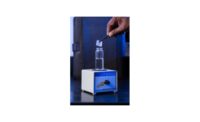Researchers at the University of Warwick, UK, found that bacteria can be detected in minutes by zapping it with electricity.
Scientists discovered healthy bacteria cells and those inhibited by antibiotics or UV light show different electric reactions. When zapped with an electrical field, live bacteria absorb dye molecules causing the cells to light up so they can be counted. Bacillus subtilis and E. coli were used as model organisms.
“This work demonstrates that bacterial electricity can lead to societally important technology, while at the same time gaining fundamental insights into our basic understanding of cells. The tool we developed can offer more opportunities by allowing experiments [that] were not possible to perform before,” says Munehiro Asally, assistant professor at the University of Warwick.
Detect contamination in manufacturing
The researchers’ findings, published in Proceedings of the National Academy of Sciences, could lead to development of medical devices that can rapidly detect live bacterial cells, evaluate the effects of antibiotics on growing bacteria colonies or identify different types of bacteria and reveal antibiotic-resistant bacteria. One target is quality control in the water, food and beverage industries.
Scientists showed bioelectrical signals from bacteria can be used to determine if they are alive or dead. The approach uses membrane-potential dynamics and electrical stimulation to differentiate between incapacitated and viable cells.
The team developed an experimental tool to study the relation of bacterial electrical signaling. Using it combined with time-lapse microscopy, they showed how live and inhibited cells respond to electrical stimulation in opposite directions. A 2.5-second electrical stimulation caused hyperpolarization in unperturbed cells while inducing depolarization in inhibited cells.
Creation of start-up firm
That’s why researchers founded Cytecom, which received a grant from Innovate UK, to make these devices available to researchers and businesses.
The team combined biological experiments, engineering and mathematical modelling.
“The system we have created can produce results [that] are similar to the plate counts used in medical and industrial testing but about 20 times faster. This could save many people’s lives and also benefit the economy by detecting contamination in manufacturing processes,” says James Stratford, managing director of Cytecom.








